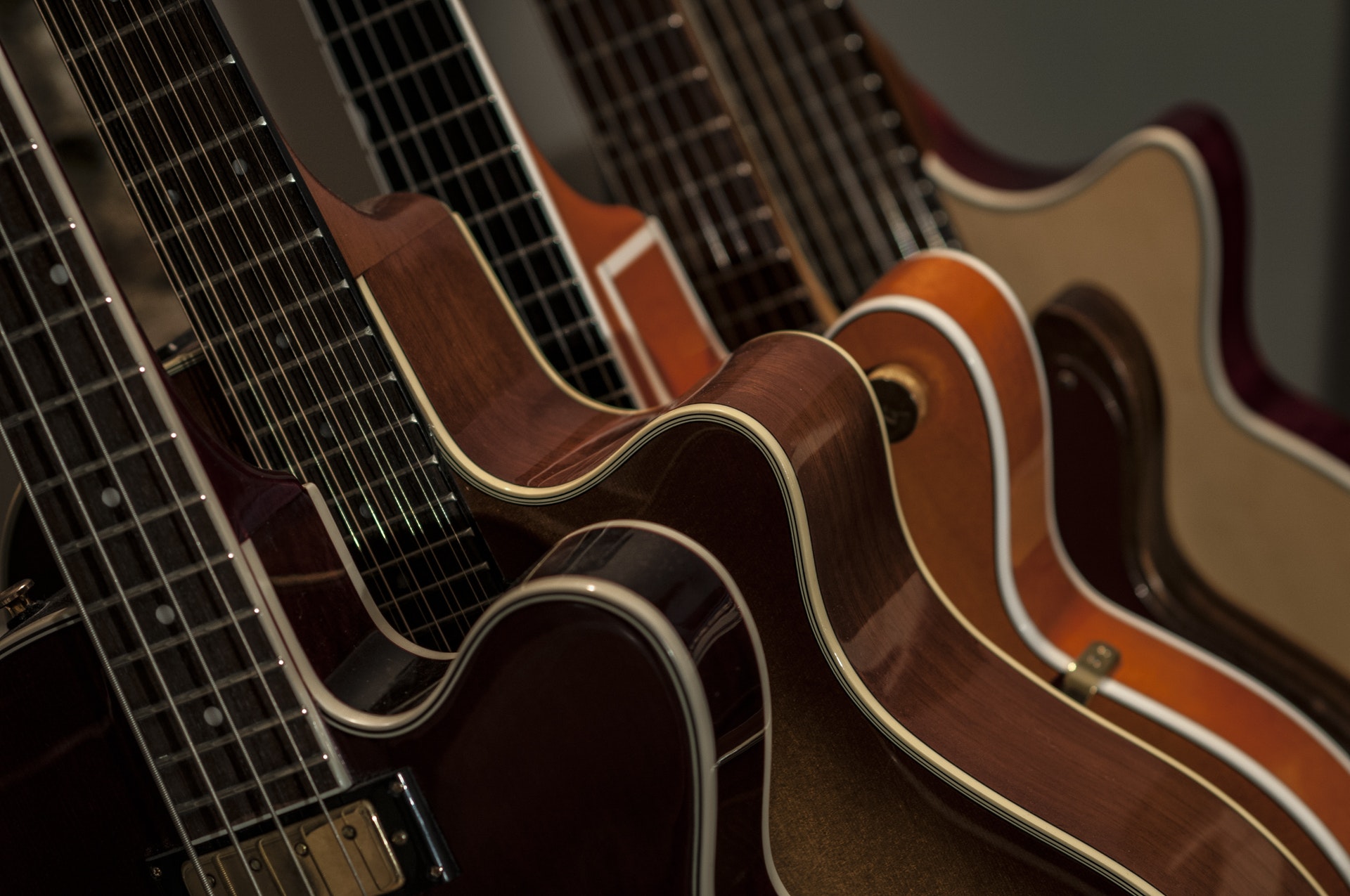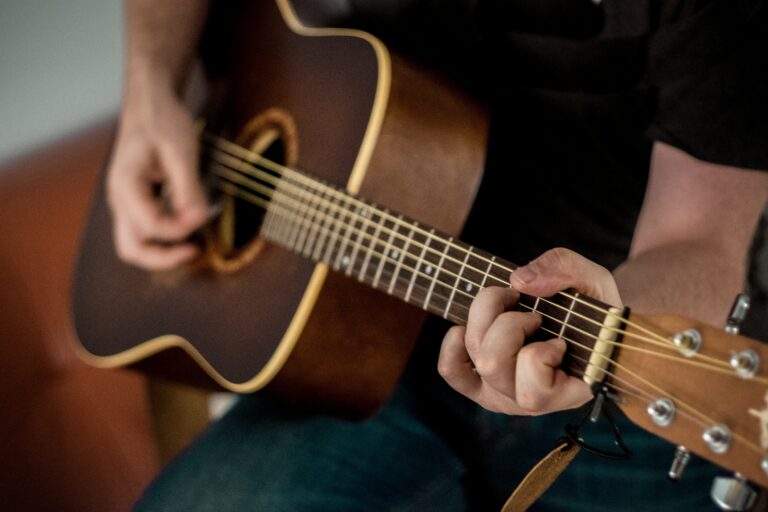10 Elements of a Song
Without understanding how songs are structured, songwriting will quickly feel convoluted. Fortunately, it isn’t hard to grasp the essential elements of a song. Once you do, songwriting will feel much more intuitive.
What are the 10 elements of a song? They are genre, melody, verse, beat, tempo, hook, lyrics, arrangement, length, and story. Understanding these components allows you to write a song from scratch with ease.
Let’s briefly make an important distinction. Then, read on as we dive into how to structure your next track with these ten guiding elements.
Elements of a Song Vs. Elements of Music
You’ve probably heard the term “elements of music.” More specifically, you may have heard that there are seven distinct elements of music. Granted, some may say there are only six, while others say there are eight.
In any case, components such as melody, tempo, and rhythm are fundamental to all forms of music.
But what’s the difference between the elements of music and the elements of a song?
When we discuss the elements of a song, we look at specific pieces to identify what makes them unique. Furthermore, considering the elements of a song is more beneficial to a songwriter, whereas understanding the elements of music is helpful for those who want to learn more about music theory.
Ultimately, you might hear people use the terms interchangeably. Nevertheless, this article considers the elements of a song as a more hands-on alternative to the elements of music. Thus, we’ll also cover the specifics of how you can apply these elements as you write your next song.
Element One: What is Genre?
Chances are that you already have a genre in mind. Furthermore, you probably find yourself moved by the tunes of certain kinds of music more than others.
When deciding on a genre, most musicians choose to emulate their favorite tracks.
You can also combine genres and make a new style of music, but we won’t go too much into that here.
Instead, let’s look at some common genre examples people pick when making songs:
- Pop
- Rock
- Hip-Hop
- Rhythm and Blues (R&B)
- Heavy Metal
- Country
- Classical
- Jazz
- Reggae
- Electronic
- And many, many more.
Why is this important? Genres make it far easier to find musical influences. Each genre has attributes and guidelines that help make songwriting more methodical.
Thus, genres allow musicians to piggyback off the work of other artists instead of creating songs totally from scratch. Keep in mind that this is vastly different from plagiarism.
Think of a musical genre as a language. Knowing English, French, or any written language makes it easier to write a book following the conventions of that language. Someone who was raised by wolves, on the other hand, would struggle to make something remotely legible.
Ultimately, researching the creative process for your preferred genre gives you the tools to write a song in that genre. It also increases your productivity as a musician, as you won’t waste time learning irrelevant skills.
Element Two: What is Melody in a Song?
Melody refers to the up-and-down flow of pitch throughout a song.
Furthermore, a song’s melody consists of notes (such as C, A-Flat, and more). In most cases, stripping a piece of its melody will leave just the beat.
However, because the melody is the movement between notes, playing the same note throughout a song does not classify.
When creating a song, you need a melody. It doesn’t need to be complex. Two or more notes are all that you need. Many songwriters start with something absurdly basic and embellish it later.
Also, many artists start with a beat before creating a melody. Some may do the inverse, but it’s usually easier to lay down notes once you lay the rhythmic foundation.
There are many paths a melody can traverse. In all cases, it comes down to changes in pitch across the length of a song. This is the easiest way to understand it (and avoid overthinking it).
Most importantly, the melody is where you can pack emotion into a song. With a minor key, it can convey feelings of guilt, sorrow, and solemn reflection. Swap in a major key to illustrate hope, optimism, and more.
Element Three: What are Chords?
Chords are multiple notes played together to achieve a harmonic effect. They expand the capabilities of modern music’s twelve notes.
Most importantly, chords add “fullness” to songs. They allow songwriters to transform a boring C note into a C minor, C major, C augmented, and many more interesting variations.
Every song has a central key, such as B minor, F major, etcetera. These keys correspond with a chord. Thus, a song in B minor is constructed around a B minor chord.
Songs also feature chord progressions (one chord would be quite dull). A chord progression drives the melody forward and enhances the “flow” of a song.
Element Four: What is Beat?
Beat, or rhythm, is the pattern on which all songs are built. Chances are, you already know a thing or two about beat. It’s okay – we’ll go over it anyway.
Without a beat, there is no structure for the melody, bassline, or vocals to follow. Even in the audible absence of a beat, there is still a predefined spacing between notes. In these instances, the beat is implied.
Thus, every song has a beat. Not all songs require lyrics or a story, nor must all songs fit cleanly into an existing genre. But all music needs a beat and a melody.
Many songs present the beat as an isolated drumline before the melody or bassline kicks in. This creates a feeling of suspense for listeners. Alternatively, some songwriters may start with the melody before dropping the beat.
Element Five: What is Tempo in a Song?
Tempo, often called BPM (beats per minute), is a song’s speed. A BPM of 60 is slow and graceful and has one beat per second. Meanwhile, a BPM of 220 is blazingly fast.
There are outliers on both ends, of course. But most songs fall within this reasonably wide range.
Classically trained musicians may prefer the terms Largo, Moderato, and Presto when discussing tempo. You’ll find these terms on most sheet music rather than BPM.
After all, measuring the exact tempo in beats per minute wasn’t feasible until metronomes came around in the 19th century. And even once they did, conventions stuck around.
If you’re curious, here is each term coupled with its BPM equivalent:
| Italian | Unofficial English Translation | Tempo |
| Largo Larghetto Adagio Andante Moderato Allegro Presto Prestissimo | Very slow Slow Still rather slow Walking speed Moderate Fast Very fast No mercy on the drummer | 40 – 60 BPM 60 – 66 BPM 66 – 76 BPM 76 – 108 BPM 108 – 120 BPM 120 – 168 BPM 168 – 200 BPM 200+ BPM |
Note that when you look at the BPMs of popular songs, the number you see is typically an average. Tempo tends to shift throughout the course of a song (it’d be boring if it didn’t).
How to Find the BPM of a Song
There are two main ways to determine a song’s tempo. One is tedious but accurate. The other is almost instant but is occasionally way off.
The first method involves counting the beats. You’ll be familiar with the process if you’ve ever calculated your heart rate without a tracker.
Sure, you could count every single beat in a song. However, you don’t have time for that. Instead, count the beats in a 15-second snippet of the song. Set a timer. Once it goes off, record the number and multiply it by 4 to get the BPM for that part of the song.
Option two is to head to SongBPM.com and enter the song’s name. The database includes almost any song you can think to look up. GetSongBPM and BPM Database are alternative options that do the same thing.
Unfortunately, you’ll soon discover that these databases often disagree – especially when it comes to faster songs. Take what you see with a grain of salt.
Element Six: What is a Hook in a Song?
A hook does what it says: it “hooks” the listener.
The hook can be lyrical, melodic, or rhythmic. Rock and heavy metal songs tend to use guitar riffs as hooks. Hip-hop tracks may use a beat. Pop artists gravitate towards a catchy lyrical chorus.
Ultimately, there’s much flexibility in what constitutes a hook. Its definition is also the most ambiguous of all the elements we’ve discussed.
Hooks can also manifest themselves as earworms. Earworms are catchy musical phrases that refuse to stop playing through your head, even when you don’t like the music.
A classic example is a pop hit from an artist you despise. Despite your vitriol for their music, you can’t stop thinking about it. You may even catch yourself humming a piece of the song and immediately cringe.
This is a perfect example of an excellent hook.
You want to pull it out of your brain, but the barb is lodged too perfectly.
It’s easy to see why songwriters seek to write the perfect hook. You may wish to do the same. Fortunately, it’s surprisingly intuitive.
Element Seven: What are Lyrics?
You might be tempted to skip this section. Lyrics are obvious: the words in a song. What more can we say?
Just because the concept of lyrics is easy to wrap our brains around doesn’t mean we shouldn’t take a closer look. They are more fascinating (and complex) than they seem.
Like with a song’s hook, lyrics are ambiguous and optional. No song needs lyrics, whereas every song needs a beat and a melody (and we’re standing by this with hardheaded fervor).
The reason artists include lyrics is that they add depth to music. They use language to enhance the emotions of melody.
Adding Lyrics to a Song
Lyrics add meaningful specificity to what is otherwise just beautiful, uplifting, saddening, or energizing noise.
When humans write songs, a psychological response generally crops up during the creative process. Without it, a songwriter will likely exclaim, “this is garbage,” and crumple the page or purge the DAW file from their hard drive.
Thus, a big part of adding lyrics is identifying/verbalizing the thoughts that influence the music. It is also crucial to understand how to put it all together through verses and a chorus.
You could also just throw together some nice-sounding nonsense and let listeners invent their own meanings.
Element Three: What is Arrangement?
Arrangement, also called structure, is a song’s progression. You might see people talk about structure terms when discussing lyrics. They’re not wrong – however, they still apply to wholly instrumental tracks.
What are the parts of song arrangement we’re talking about? Take a look:
The intro. As the name suggests, this is where the song begins. The intro often serves double duty as a hook. It may or may not differ from the chorus – if not, the intro is the first instance of the chorus.
The chorus. This is the part that repeats throughout a song between verses. A chorus often includes the primary theme and title of the song. It could also be a characterizing riff that plays throughout a song.
The verses. Verses tell a story. They function as lyrical and melodic chapters. Thus, you may see a “verse 1,” a “verse 2,” and so on.
The bridge. Whenever there’s a bridge, expect a radical change in the sound and feel of a song. Think of a musical bridge as a literal bridge connecting two continents.
The outro. As the opposite of an intro, the outro concludes the song. It may include audio effects like fade-outs to gracefully disengage the listener.
These five parts tend to follow a pattern that resembles this:
<Intro>
<Verse 1>
<Chorus>
<Verse 2>
<Chorus>
<Bridge>
<Verse 3>
<Chorus>
<Outro>
For an even better understanding, head to Genius and look up the lyrics of your favorite songs. You can view specific examples of how structure contributes to great music.
Element Nine: What is Song Length and Why is it Important?
It is easy to overlook song length. Many new songwriters don’t think about it at all – it just happens once they decide the song is complete.
Nevertheless, a song’s length is a careful balance. If it’s too short, the listener may not have a chance to feel the music. Conversely, it risks boring its audience if it’s too long.
Another vital consideration is genre. Some styles lend themselves to shorter songs, such as pop and punk. Other genres are rife with songs that exceed six minutes, such as classical, progressive rock, and thrash metal.
There’s also the fact that songs are getting shorter.
A big reason behind this is streaming. Spotify, for example, pays the same amount per stream so long as a song is at least thirty seconds. Thus, whether a piece is 31 seconds or nine minutes long doesn’t matter. But the nine-minute song likely took much more effort to produce.
From an economic perspective, why wouldn’t you write shorter songs? People and their suppressed attention spans seem to like them. Currently, 3 minutes seems to be the sweet spot for popular songs.
Putting the desire for popularity aside, song length becomes much more open-ended. Sometimes a songwriter needs 8 minutes to fulfill the needs of a track. There is nothing wrong with that –it’s an honorable decision.
Element Ten: What is Story in a Song?
We’ve saved the most ambiguous part for last.
Like any piece of art, including novels and movies, songs require a compelling story (and plot) to truly engage listeners.
Often, a song’s lyrics are deep enough to be a novella. But even in the absence of lyrics, a captivating chord progression tells a story. The emotional rollercoaster of harmony, melody, and bridges will bring about mental responses like reading a life-changing book or viewing a cinematic masterpiece.
The rest is up to you, the songwriter.
Conclusion
Creating a song is a creative and open-ended process. Nevertheless, the ten elements of a song serve to guide musicians as they create compelling tracks.
Melody and beat are two elements that every song includes. The rest are up to the artist’s discretion. Should a song include lyrics? If the lyrics enhance the piece, absolutely. What about a story? Every good song ends up with a story, even if not in the literal definition.
Furthermore, arrangement is the scaffolding. It guides artists along a path to musical greatness by enabling the logical placement of musical chapters, called verses. And by being able to anticipate upcoming choruses, listeners can dance, sing along, headbang, or respond however they wish.
There are many more fascinating nuances and complexities to songwriting the more you dig. Even one element, lyrics, are involved enough to warrant their own long-form article. Ultimately, the ten elements of music can be broken down infinitely.
But they are a great starting point.







